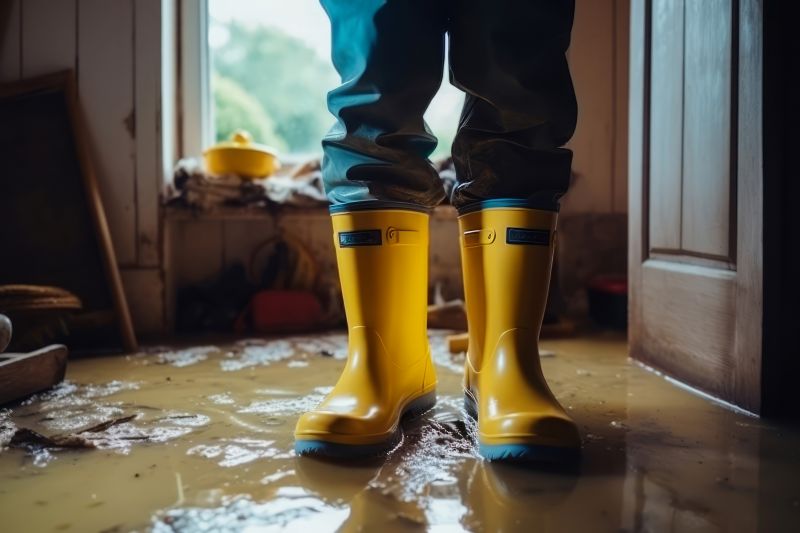Essential Storm Restoration Tools For Rapid Property Recovery
Equip yourself with the most effective tools and supplies to handle storm damage repairs with confidence.
 In the aftermath of a storm, restoring a property involves a variety of specialized products designed to repair, reinforce, and safeguard structures against future events. From roofing materials to waterproofing solutions, the right tools and supplies are essential for effective storm restoration efforts. Given the unpredictable nature of storms, it is important to select durable and reliable products that can withstand harsh weather conditions while providing long-lasting protection.
In the aftermath of a storm, restoring a property involves a variety of specialized products designed to repair, reinforce, and safeguard structures against future events. From roofing materials to waterproofing solutions, the right tools and supplies are essential for effective storm restoration efforts. Given the unpredictable nature of storms, it is important to select durable and reliable products that can withstand harsh weather conditions while providing long-lasting protection.
Top Overall Option
Heavy-Duty Waterproof Tarp
A heavy-duty waterproof tarp serves as a versatile and reliable barrier against water intrusion, wind damage, and debris during storm restoration. Its durable material and secure fastening options make it suitable for covering damaged roofs, windows, or exposed areas, providing immediate protection while permanent repairs are planned or underway.
Types of Products For Storm Restorations
Roofing Shingles and Panels
Various roofing materials designed to replace or reinforce damaged roofs, offering weather resistance and structural support.
Waterproof Sealants and Caulks
Sealants that help prevent water leaks around windows, doors, and roof penetrations, ensuring a tight barrier against moisture intrusion.
Storm-Resistant Windows and Doors
Impact-resistant windows and doors that can withstand high winds and flying debris, reducing the risk of breakage.
Roof Underlayment
Protective layers installed beneath roofing shingles to provide additional moisture barrier and support.
Siding and Exterior Cladding
Durable siding options that resist wind and water damage, maintaining the exterior integrity of the structure.
Water Barriers and Membranes
Flexible membranes used to waterproof foundations, basements, and other vulnerable areas.
Storm-Resistant Gutters and Downspouts
Systems designed to efficiently channel water away from the property, preventing pooling and water damage.
Emergency Repair Kits
Comprehensive kits containing essential tools and materials for immediate storm damage mitigation.
Structural Reinforcement Hardware
Brackets, straps, and fasteners that strengthen existing structures against high winds and storm impact.
Temporary Fencing and Barriers
Protective barriers to secure damaged areas and restrict access during restoration.
Fire-Resistant Insulation
Insulation materials that resist fire spread and add an extra layer of safety.
Drainage Systems
Products designed to improve water runoff and prevent flooding around the property.
Dehumidifiers and Air Movers
Equipment to reduce moisture and dry out affected areas after water intrusion.
Mold and Mildew Prevention Products
Solutions to inhibit mold growth following water damage.
Roof Ventilation Products
Ventilation systems that help reduce heat and moisture buildup in the attic space.
Stormproof Paints and Coatings
Protective coatings that add an extra layer of defense to exterior surfaces.
Foundation Waterproofing Products
Materials designed to reinforce and seal foundations against water penetration.
Popular Choices
Widely used for their ability to withstand debris impact and high winds, enhancing safety.
Commonly employed for quick coverage of damaged areas, offering immediate protection.
Frequently chosen for roof replacements or repairs following storm damage.
Popular for sealing gaps and cracks to prevent water ingress in vulnerable areas.
Often installed to improve entry point resilience against high winds and debris.
Trending options to improve water runoff and reduce clogging during heavy rains.
Commonly used for foundation protection and basement waterproofing.
Popular for stabilizing weak or compromised structures.
Frequently employed to dry out water-affected areas efficiently.
In demand for protecting low-lying or flood-prone properties.
Chosen for exterior protection against storm debris.
Often used as a secondary layer for added waterproofing.
Applied to exterior surfaces to provide additional water resistance.
Popular for managing excess water and preventing pooling.
Commonly selected after water exposure to inhibit mold growth.
Chosen for entry points to enhance structural resilience.
For residents and restoration professionals in Brooksville, FL, understanding the range of available storm restoration products can facilitate better decision-making. These products include a wide array of items such as roofing components, tarps, sealants, siding, and water barriers. Proper application of these materials can help prevent further damage from leaks, wind, and water intrusion, ultimately preserving the integrity of the property.
Choosing the appropriate products involves considering factors like material quality, ease of installation, and compatibility with existing structures. Weather-resistant features and proven performance in storm-prone areas are also critical. Whether addressing immediate damage or preparing for future storms, having a comprehensive set of tools and supplies ensures a thorough and effective restoration process. Properly selected products can make a significant difference in restoring safety, functionality, and peace of mind for homeowners and contractors alike.
Key Buying Considerations
- Assess the specific storm risks in your area to select appropriate products.
- Prioritize materials with proven durability and weather resistance.
- Consider ease of installation for quicker repairs and restorations.
- Check compatibility with existing structures and materials.
- Evaluate the long-term performance and maintenance requirements.
- Determine the level of impact resistance needed for windows and doors.
- Look for products that offer effective waterproofing and sealing properties.
- Ensure that safety standards and certifications are met for impact and wind resistance.
- Consider the size and coverage area to match the scope of damage.
- Review product warranties and manufacturer support for peace of mind.
- Factor in budget constraints while balancing quality and durability.
- Choose versatile products that can be used for multiple repair needs.
- Be aware of local building codes and regulations related to storm restoration.
- Select products with proven track records in storm-prone regions.
- Evaluate the availability of replacement parts and accessories.
